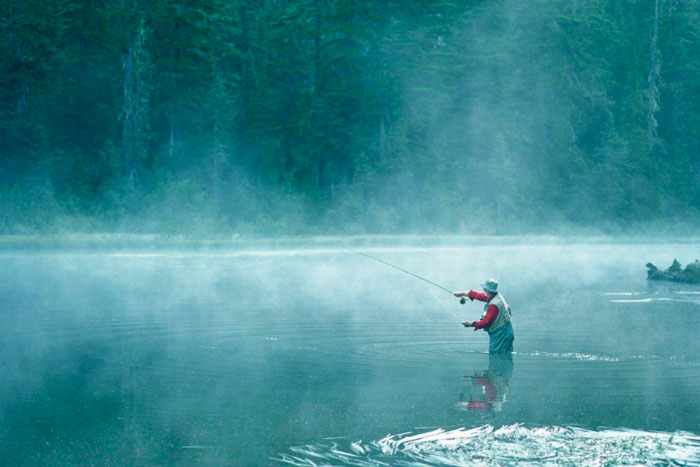Blending aviation with hunting and fishing creates an unparalleled outdoor experience that offers adventure, accessibility, and self-reliance. Pilots who embrace these activities gain access to untouched landscapes where wildlife thrives and waters remain undisturbed. The ability to fly into remote areas eliminates the limitations of traditional travel, offering a sense of freedom that few other pursuits can match. Beyond the thrill of exploration, aviation enhances efficiency, allowing outdoor enthusiasts to reach prime locations in a fraction of the time.

However, this unique combination also requires careful planning, adherence to regulations, and an understanding of safety considerations. Navigating weather conditions, packing efficiently, and mastering survival skills are all crucial elements of a successful trip. Those who integrate aviation, hunting, and fishing into their lifestyle hone their technical expertise and build a strong sense of camaraderie with like-minded adventurers. For Cody Fortier these experiences foster a deeper connection to nature, transforming every outing into a journey of skill, patience, and discovery.
The Appeal of Hunting, Fishing, and Aviation
Many outdoor enthusiasts find that these three skills enhance one another. Avid hunters appreciate the ability to scout new territories from the sky, while anglers benefit from reaching pristine waters far from crowded shorelines. Aviation transforms both into something more dynamic, making each trip an adventure rather than just an excursion. The ability to transition seamlessly between air, land, and water adds a layer of excitement that traditional methods simply cannot provide.
Beyond the practical advantages, this unique combination fosters self-reliance and a deeper connection to nature. Navigating the skies, tracking the game, and casting a line in untouched waters requires patience, knowledge, and respect for the environment. Those who embrace all three develop a well-rounded skill set that turns every outing into a rewarding challenge. Over time, these experiences cultivate a profound appreciation for conservation, ensuring that future generations can continue to enjoy these traditions.
Expanding Access with Aviation
Aviation opens the door to some of the most secluded hunting and fishing locations, removing the barriers of rough terrain and long, exhausting treks. Instead of relying on remote roads or hiking for miles, pilots can land near pristine lakes, dense forests, or open fields where game is abundant.
Unlike traditional travel methods, flying offers unmatched flexibility. A well-planned flight can take outdoor enthusiasts from one prime location to another in a fraction of the time it would take by land or water. Whether reaching a remote river teeming with fish or a backcountry hunting spot untouched by human presence, aviation makes it possible to explore multiple destinations within a single trip. The ability to cover vast distances in a short time makes each excursion more productive and rewarding.
Reaching Prime Hunting and Fishing Spots
Finding the perfect spot to hunt or fish often means going beyond where roads can take you. A small aircraft provides access to areas that would otherwise require days of hiking or boating. This advantage is especially valuable during peak seasons when easily accessible locations become crowded, disrupting game movement and fishing conditions. With the ability to land near untouched landscapes, hunters and anglers enjoy a more immersive and rewarding experience.
Transporting gear is another benefit of incorporating aviation into outdoor pursuits. Rifles, fishing rods, and essential supplies can be packed efficiently in a properly equipped aircraft, ensuring everything needed for a successful trip is within reach. Careful planning is necessary to comply with regulations, particularly when carrying firearms, but the convenience of flying directly to the destination outweighs the extra preparation. Having a well-organized packing system also ensures that nothing important is left behind, reducing stress and improving overall efficiency.
Ethical considerations play an important role in responsible hunting and fishing when aviation is involved. Laws often prohibit spotting a game from the air and immediately pursuing it, ensuring fair chase principles are upheld. Respecting these guidelines helps maintain a balance between technology and traditional outdoor ethics.
Navigating Challenges and Safety Considerations
Combining aviation with hunting and fishing introduces unique challenges that require careful preparation. Weather conditions can change rapidly, making flight planning a critical aspect of any trip. Pilots must assess forecasts, identify safe landing zones, and have contingency plans in place. Being caught in unpredictable weather far from civilization can turn a routine outing into a dangerous situation, emphasizing the need for thorough preparation. Even experienced pilots must remain vigilant, as remote locations often have limited emergency options.
Survival skills are just as important as flight expertise. Remote locations often mean limited access to emergency services, so knowing how to handle unexpected situations is paramount. From basic first aid to understanding how to signal for help, every outdoor adventurer should be equipped with the knowledge to handle unforeseen circumstances. The right mindset and preparation can make all the difference when facing nature’s unpredictability. Carrying emergency communication devices, such as satellite phones or personal locator beacons, adds an extra layer of security in case of an unexpected event.
Planning the Ultimate Outdoor Trip
Merging aviation with hunting and fishing requires strategic planning to ensure a seamless experience. Choosing a destination that offers abundant wildlife and suitable landing conditions is key. Some areas have designated airstrips for backcountry pilots, while others may require landing on gravel bars or remote clearings. Researching local regulations helps prevent complications and ensures compliance with conservation laws. Detailed knowledge of the terrain also helps pilots anticipate obstacles and plan alternative landing options if necessary.
Packing efficiently is another crucial aspect of a successful trip. Space and weight limitations mean prioritizing basic gear without overloading the aircraft. Multi-use equipment, lightweight camping supplies, and proper food storage solutions can make a big difference in comfort and convenience. A well-organized approach ensures that every part of the adventure is enjoyable rather than a logistical challenge. Proper weight distribution also plays a role in flight safety, making it important to balance the load correctly for optimal aircraft performance.
